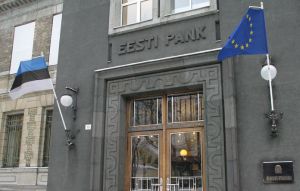Banks, Deposits, Estonia, Financial Services, Investments
International Internet Magazine. Baltic States news & analytics
Thursday, 18.12.2025, 03:26
Estonia's current account ran EUR 108 mln surplus in Q2
 Print version
Print version |
|---|
The surplus was driven by the positive balance of the services account as
exports of services exceeded imports, and by the net inflow of secondary
income from European Union Structural Funds and fines.
The surplus in services was 505 million euros, which was 15% more than in
the second quarter of 2016. The surplus was mainly increased by travel,
computer and construction services. The net outflow of investment income was
266 million euros, which is 50% more than in the same quarter of the previous
year. This came mainly from the reinvestment of profits earned in Estonia by
foreign direct investors. The goods deficit increased by 30% to 319 million
euros.
Exports of goods were up by 4% compared to the second quarter of 2016,
while imports were up by 6%. The growth in exports was affected mainly by
increased exports of mineral products including oil shale, while the growth in
imports was driven by imports of transport vehicles. The surpluses in secondary
income and on the capital account were boosted by a substantial increase in European
Union investment support.
The financial account of the balance of payments shows that investment
abroad from Estonia was 171 million euros larger than investment in Estonia
from abroad. The net capital outflow was again a consequence of investments in
foreign securities by pension funds. The net outflow of investment through the
banking system, which covers credit institutions and the Bank of Estonia, was
136 million euros and occurred through growth in client deposits, which allowed
banks to reduce their own foreign liabilities.
Growth in deposits emanated from the current account surplus, as increased
exports resulted in a greater inflow of funds to companies, which held them in
banks operating in Estonia. The growth in general government deposits was
affected by the Structural Funds received from the European Union. Unlike in
the first quarter of 2017, the inflow of direct investment exceeded the
outflow. The inflow of investment increased because non-financial companies and
credit institutions reinvested the profits they had earned in Estonia.
The net international investment position at the end of the second quarter
of 2017 showed that the external liabilities of Estonian residents exceeded
their external assets by 7.5 billion euros, or 34% of GDP. During the quarter
the investment position moved in the direction of net balance by 146 million
euros.
Statistics for the external debt show that at the end of the quarter, the
debt claims of Estonian residents on non-residents were 2.5 billion euros, or
12% of GDP, larger than their debt liabilities. Debt assets increased during
the quarter, while external liabilities decreased.
Estonian investments abroad in the past quarters have continued to focus on
securities and loans. Investments of pension funds and loan transactions within
groups of companies make up the largest share. The Bank of Estonia's
purchase of 449 million euros worth of securities in the second quarter do not
affect external balance as the requirements of other investments by the bank
will decrease as a result of this. Overall, more assets were moved abroad from
Estonia than to Estonia from abroad. This has been a customary direction in the
past few years, the reasons of which must probably be sought from the lack of
attractiveness of the local investment climate.








 «The Baltic Course» Is Sold and Stays in Business!
«The Baltic Course» Is Sold and Stays in Business!

